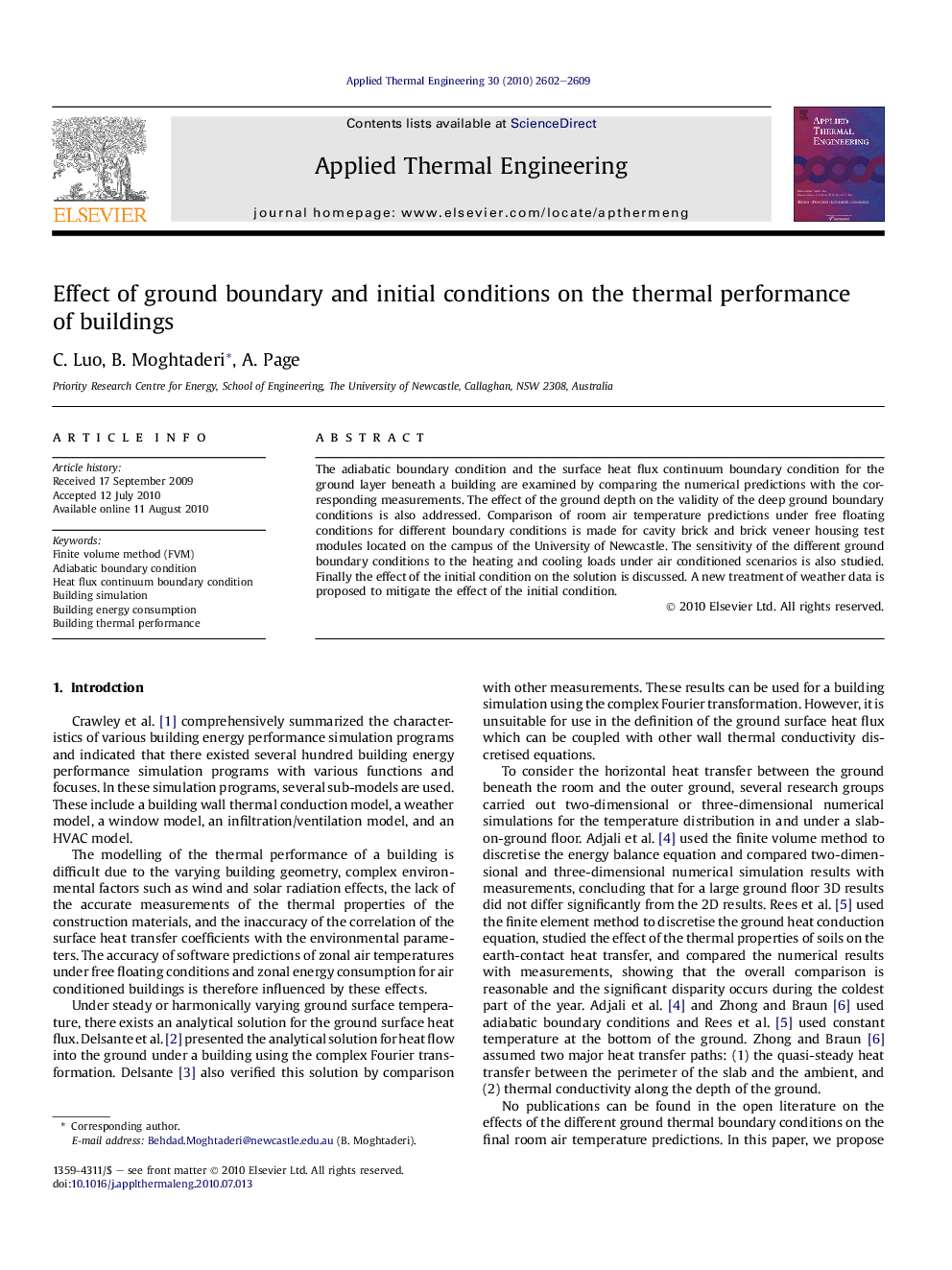| Article ID | Journal | Published Year | Pages | File Type |
|---|---|---|---|---|
| 648194 | Applied Thermal Engineering | 2010 | 8 Pages |
Abstract
The adiabatic boundary condition and the surface heat flux continuum boundary condition for the ground layer beneath a building are examined by comparing the numerical predictions with the corresponding measurements. The effect of the ground depth on the validity of the deep ground boundary conditions is also addressed. Comparison of room air temperature predictions under free floating conditions for different boundary conditions is made for cavity brick and brick veneer housing test modules located on the campus of the University of Newcastle. The sensitivity of the different ground boundary conditions to the heating and cooling loads under air conditioned scenarios is also studied. Finally the effect of the initial condition on the solution is discussed. A new treatment of weather data is proposed to mitigate the effect of the initial condition.
Keywords
Related Topics
Physical Sciences and Engineering
Chemical Engineering
Fluid Flow and Transfer Processes
Authors
C. Luo, B. Moghtaderi, A. Page,
